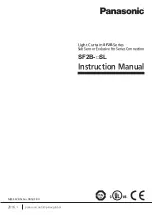
9720 VCO 21
010321
A-R and connect a trigger source (such
as the appropriate trigger output of a
midi2cv8 to input G (Gate). Gate input
signals should be "true positive" and
transition from ground to a positive
voltage between 4 and 15V to trigger
the Modulator. Activate the trigger and
by watching the Modulator LED verify
that the modulation output rises when
the trigger signal goes on and stays high
as long as the trigger is present. When
the gate signal is removed the modulator
output should return to zero volts. Apply
the same trigger signal to the T (Trigger) input and observe that the output rises in response to
the trigger but releases as soon as it reaches the peak, even if the trigger is still present.
If
there are problems with these tests check the wiring of jacks J8 and J9. On the circuit board
check Q5, D6 and the associated resistors.
If you have unresolved problems review the Design Analysis section while looking at the
schematic. It may seem like greek the first time you read through it but on a second reading
more things will make sense and on a third even more. Be sensitive to how different sections
of ICs are used. For example, notice that both the OscA Ramp and OscB Pulse outputs use
sections of IC6. If OscA is not working at all and OscB's Pulse output is also not working (but
other OscB outputs are) It may be the part that is common to the two, IC6, so closely examine
it's orientations, how it is soldered, feel it for excess heat and so on.
Successful completion of these tests is a good indication
that the module is working properly.
( ) Gather the wires from the circuit board to the front
panelcontrols together and cinch the bundle with the
three Nylon Wire Ties supplied as shown in the photo.
Cinch the ties tight and clip off the excess.
THE PANEL CONTROLS
You got to know the panel controls pretty well during testing. Here's a different perspective on
what they do.
VCO CONTROLS
Pitch
. Each Oscillator has its own independent Pitch knob
with a range of slightly more than 3 octaves. With no external
CV inputs each oscillator produces a pitch of approximately C
3
(C below middle C)
at "max" fully ClockWise rotation and C
0
at "min" fully CounterClockWise rotation.
OscA Pitch CV Input 1.
This 1V/oct scaled
Summary of Contents for 9720
Page 27: ...9720 VCO 27 010321...








































